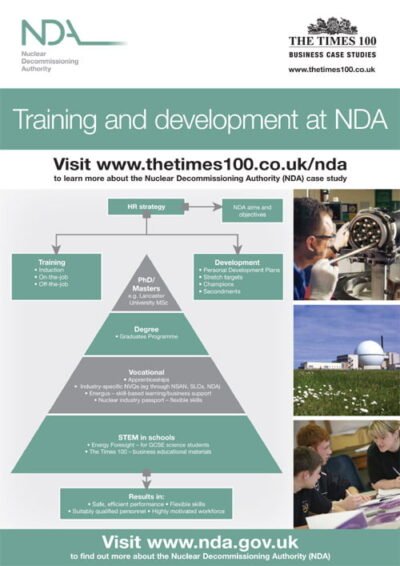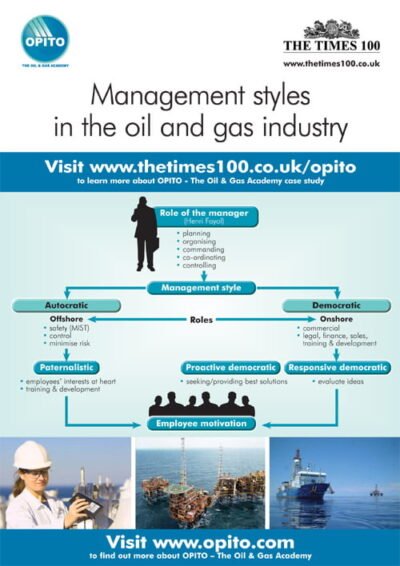Workforce efficiency insights refer to the analytical understanding of how effectively an organisation utilises its human resources to achieve desired outcomes. This concept encompasses a variety of factors, including employee productivity, engagement levels, and the alignment of workforce capabilities with organisational goals. By delving into these insights, businesses can identify areas of strength and weakness within their workforce, allowing for targeted improvements that can lead to enhanced performance and profitability.
To gain a comprehensive understanding of workforce efficiency, organisations often employ various analytical tools and methodologies. These may include performance metrics, employee feedback mechanisms, and benchmarking against industry standards. By systematically analysing these data points, businesses can uncover patterns and trends that inform strategic decision-making.
For instance, a company might discover that certain teams consistently outperform others, prompting an investigation into the practices and conditions that contribute to their success. This level of insight is crucial for fostering a culture of continuous improvement and ensuring that all employees are working towards common objectives.
Summary
- Understanding workforce efficiency insights is crucial for businesses to identify areas for improvement and make informed decisions.
- Workforce efficiency is important for businesses as it directly impacts productivity, cost-effectiveness, and overall performance.
- Key metrics for measuring workforce efficiency include employee productivity, labour cost, turnover rate, and absenteeism.
- Implementing strategies such as training and development, flexible work arrangements, and performance incentives can improve workforce efficiency.
- Utilising technology, such as workforce management software and data analytics, can provide valuable insights for enhancing workforce efficiency.
Importance of Workforce Efficiency in Business
The significance of workforce efficiency in business cannot be overstated. Efficient use of human resources directly correlates with an organisation’s ability to meet its goals and maintain a competitive edge in the marketplace. When employees are engaged and productive, they contribute to higher quality outputs, reduced operational costs, and improved customer satisfaction.
Conversely, inefficiencies can lead to wasted resources, diminished morale, and ultimately, a decline in profitability. Moreover, in an era where businesses face increasing pressure to adapt to rapid changes in technology and consumer behaviour, workforce efficiency becomes even more critical. Companies that prioritise efficiency are better positioned to respond swiftly to market demands and innovate effectively.
For example, organisations that implement flexible work arrangements or invest in employee training often find that they can pivot more readily in response to new challenges. This adaptability not only enhances operational resilience but also fosters a culture of innovation that can drive long-term success.
Key Metrics for Measuring Workforce Efficiency

To effectively measure workforce efficiency, organisations must rely on a variety of key performance indicators (KPIs). These metrics provide quantifiable data that can be analysed to assess employee performance and overall organisational effectiveness. Commonly used metrics include productivity rates, absenteeism levels, employee turnover rates, and engagement scores.
Each of these indicators offers unique insights into different aspects of workforce efficiency. For instance, productivity rates can be calculated by measuring output per employee or per hour worked. This metric allows organisations to identify high-performing teams and replicate their practices across the workforce.
Absenteeism levels, on the other hand, can indicate underlying issues such as employee dissatisfaction or health concerns. High turnover rates may signal problems with workplace culture or inadequate career development opportunities. By monitoring these metrics regularly, businesses can make informed decisions about resource allocation and workforce management strategies.
Implementing Strategies to Improve Workforce Efficiency
Improving workforce efficiency requires a multifaceted approach that encompasses various strategies tailored to the specific needs of the organisation. One effective strategy is the implementation of targeted training and development programmes. By investing in employee skills and knowledge, organisations can enhance individual performance and foster a culture of continuous learning.
For example, a company might offer workshops on time management or project management techniques to help employees optimise their workflows. Another critical strategy involves fostering a positive workplace culture that prioritises employee well-being and engagement. This can be achieved through initiatives such as flexible working arrangements, recognition programmes, and open communication channels.
When employees feel valued and supported, they are more likely to be motivated and productive. Additionally, regular feedback mechanisms can help identify areas for improvement and ensure that employees remain aligned with organisational goals.
Utilizing Technology for Workforce Efficiency Insights
In today’s digital age, technology plays a pivotal role in enhancing workforce efficiency insights. Advanced analytics tools and software solutions enable organisations to collect and analyse vast amounts of data related to employee performance and engagement. For instance, human resource management systems (HRMS) can track employee attendance, performance reviews, and training progress, providing valuable insights into workforce dynamics.
Moreover, artificial intelligence (AI) and machine learning algorithms can be employed to predict trends in employee behaviour and performance. By analysing historical data, these technologies can identify potential issues before they escalate, allowing organisations to take proactive measures. For example, predictive analytics might reveal patterns indicating that certain teams are at risk of burnout due to excessive workloads.
Armed with this information, management can implement interventions to redistribute tasks or provide additional support.
Challenges in Achieving Optimal Workforce Efficiency

Despite the clear benefits of striving for optimal workforce efficiency, organisations often encounter several challenges along the way. One significant hurdle is resistance to change among employees. When new processes or technologies are introduced, some individuals may feel threatened or uncertain about their roles within the organisation.
This resistance can hinder the successful implementation of efficiency initiatives and create friction within teams. Additionally, data privacy concerns pose another challenge in the pursuit of workforce efficiency insights. As organisations increasingly rely on data analytics to monitor employee performance, they must navigate the delicate balance between leveraging data for improvement and respecting individual privacy rights.
Ensuring compliance with regulations such as the General Data Protection Regulation (GDPR) is essential for maintaining trust between employees and management.
Case Studies of Successful Workforce Efficiency Initiatives
Examining real-world examples of successful workforce efficiency initiatives can provide valuable insights into best practices and effective strategies. One notable case is that of Google, which has long been recognised for its innovative approach to employee engagement and productivity. The company employs a data-driven methodology known as “People Analytics” to assess various aspects of workforce performance.
By analysing employee feedback and performance metrics, Google has implemented changes that have led to increased job satisfaction and productivity across its teams. Another compelling example is that of Toyota, which has embraced lean manufacturing principles to enhance workforce efficiency. The Toyota Production System focuses on minimising waste while maximising value through continuous improvement practices known as “Kaizen.” By empowering employees at all levels to identify inefficiencies and suggest improvements, Toyota has cultivated a culture of innovation that has significantly boosted productivity while maintaining high-quality standards.
The Future of Workforce Efficiency Insights
As businesses continue to evolve in response to technological advancements and changing market dynamics, the future of workforce efficiency insights is likely to be shaped by several key trends. One such trend is the increasing integration of artificial intelligence into workforce management processes. AI-driven tools will enable organisations to analyse employee performance data more comprehensively and make real-time adjustments to optimise productivity.
Furthermore, the rise of remote work is expected to influence how organisations approach workforce efficiency insights. As more companies adopt hybrid work models, understanding how remote work impacts employee engagement and productivity will become paramount. Organisations will need to develop new metrics tailored specifically for remote teams while ensuring that employees remain connected and engaged despite physical distance.
In conclusion, the landscape of workforce efficiency insights is continually evolving as businesses adapt to new challenges and opportunities. By leveraging technology, implementing effective strategies, and learning from successful case studies, organisations can enhance their understanding of workforce dynamics and drive sustainable improvements in efficiency.
For more information on workforce efficiency insights, you may be interested in reading about the challenges of big data integration for companies. This article explores how businesses can effectively utilise big data to improve their operations and decision-making processes. By integrating big data into their workforce management strategies, companies can gain valuable insights that can lead to increased efficiency and productivity. To learn more about this topic, visit here.
FAQs
What are workforce efficiency insights?
Workforce efficiency insights refer to the data and analysis that provide an understanding of how effectively an organization’s workforce is operating. This can include metrics such as productivity, performance, and resource allocation.
Why are workforce efficiency insights important?
Workforce efficiency insights are important because they provide valuable information for organizations to make informed decisions about their workforce. This can lead to improved productivity, cost savings, and better resource management.
How are workforce efficiency insights measured?
Workforce efficiency insights can be measured through various metrics such as employee productivity, time and attendance tracking, performance evaluations, and resource utilization. These measurements can be gathered through software systems, surveys, and other data collection methods.
What are the benefits of using workforce efficiency insights?
The benefits of using workforce efficiency insights include identifying areas for improvement, optimizing resource allocation, increasing productivity, reducing costs, and making data-driven decisions to enhance overall workforce performance.
How can organizations use workforce efficiency insights to improve their operations?
Organizations can use workforce efficiency insights to identify inefficiencies, implement targeted training and development programs, adjust staffing levels, and streamline processes to improve overall operations and performance.
 Developing responsiveness through organisational structure (MP3)
Developing responsiveness through organisational structure (MP3)  NDA A3 ePoster Edition 15 "Training and development at NDA"
NDA A3 ePoster Edition 15 "Training and development at NDA"  Enterprise Rent-A-Car A3 ePoster Edition 13 "Using a range of management styles to lead a business"
Enterprise Rent-A-Car A3 ePoster Edition 13 "Using a range of management styles to lead a business"  Intellectual Property Office A3 ePoster Edition 13 "Intellectual property rights and entrepreneurship"
Intellectual Property Office A3 ePoster Edition 13 "Intellectual property rights and entrepreneurship"  OPITO A3 ePoster Edition 14 "Management styles in the oil and gas industry"
OPITO A3 ePoster Edition 14 "Management styles in the oil and gas industry" 